



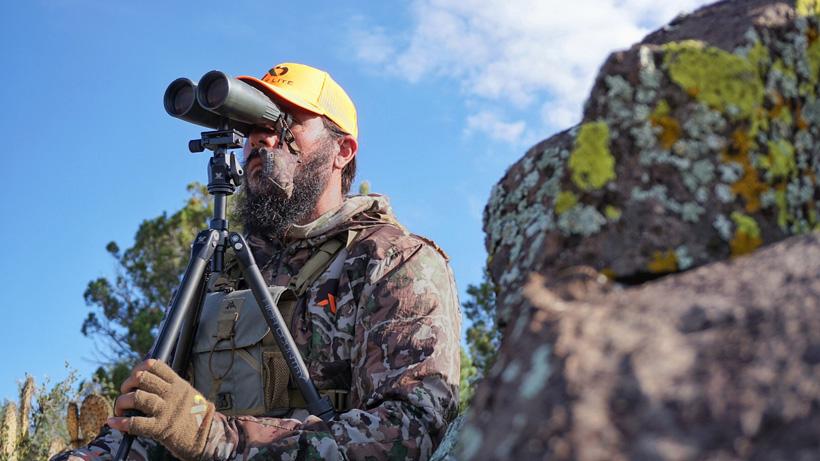

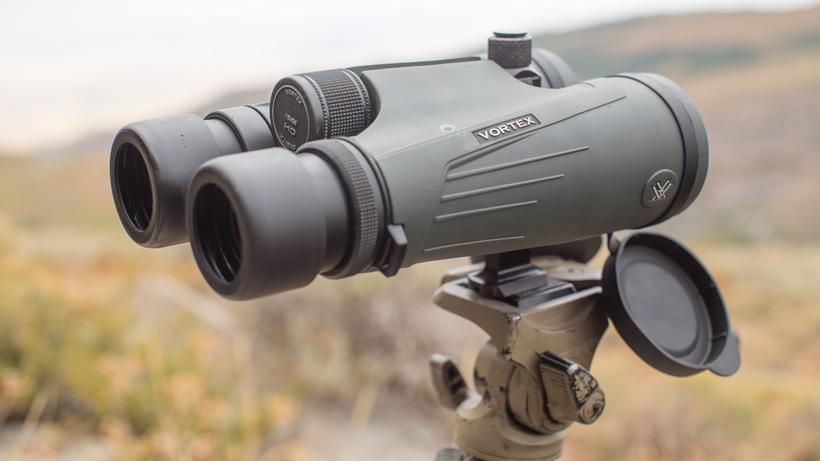
Vortex Kaibab 15x56 binoculars mounted on a tripod. Photo credit: Brady Miller
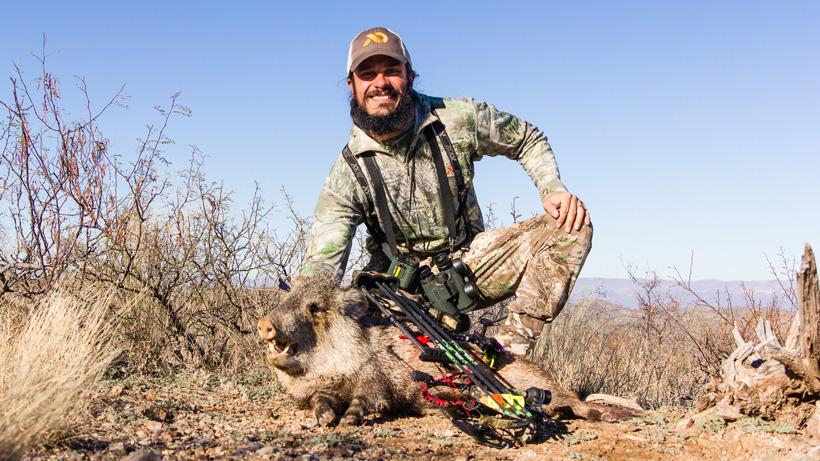
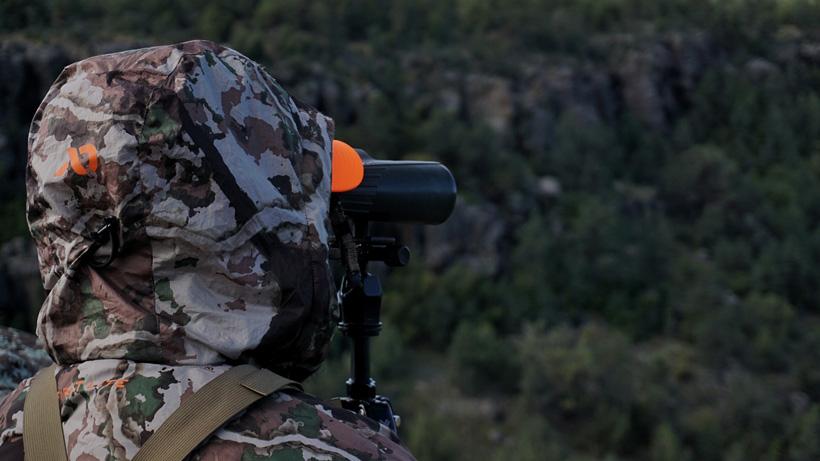

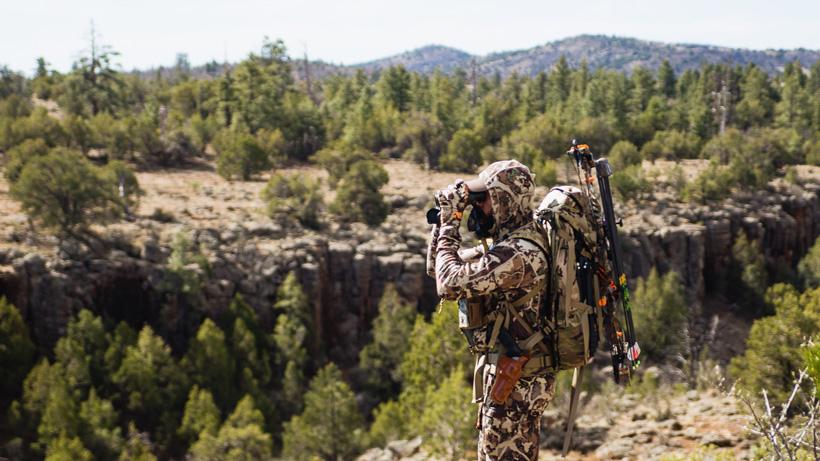
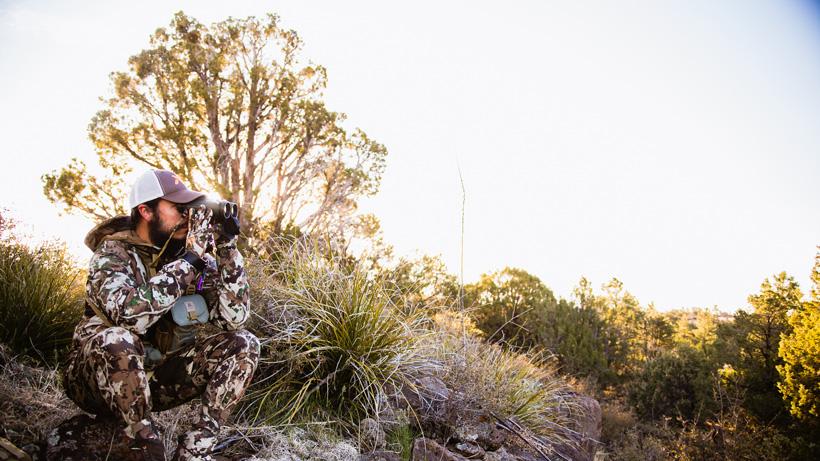

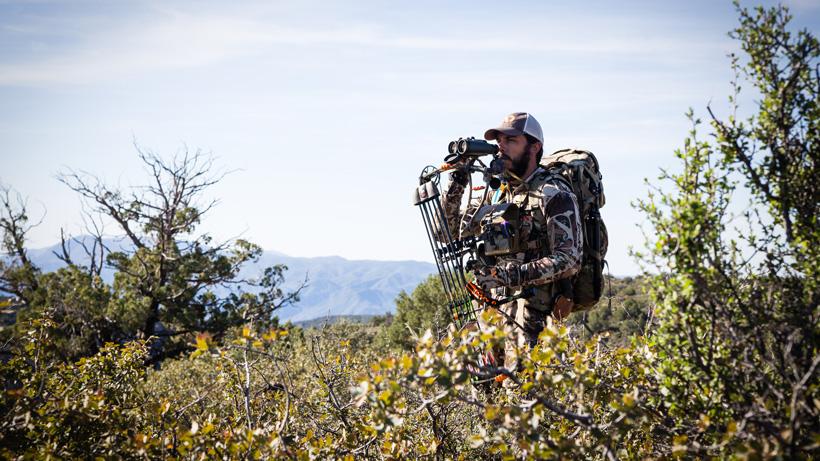


Rule of thirds grid line for glassing high mountain desert terrain.
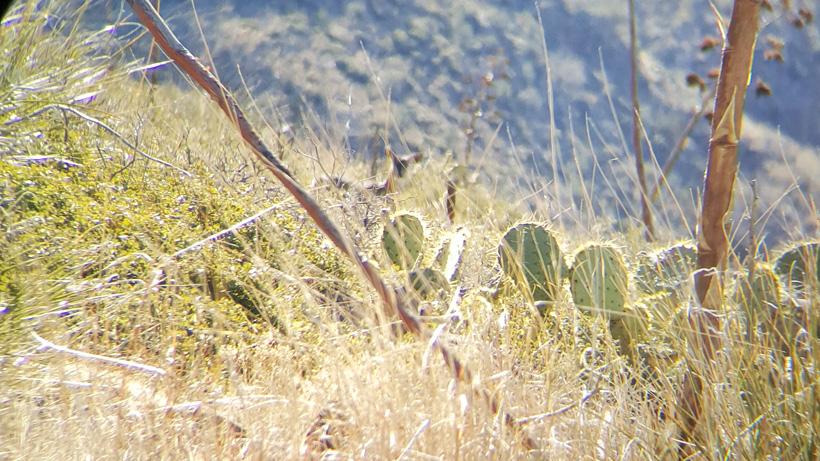

If you were to ask me five years ago what kind of binoculars I liked for hunting, I might have laughed at you. That would have been because I didn't even own a pair, let alone use them for hunting. Binoculars always seemed like more of a hassle to me than a blessing. They were just one more thing I had to carry and, if we did have a pair with us, they were jumping back and forth on my chest with every step I took on the shoelace they were attached to around my neck. Fast forward a few years and I have a very different opinion on the matter. Using my binoculars to locate game has never felt more important than it does now and plays a huge role in my hunting tactics and success in Arizona. Below, I want to go over some things that have helped my glassing game over the years and, hopefully, will also help yours.
One of the biggest tips I can give you to up your glassing game is to buy a tripod. I don't care if it's the cheapest tripod in existence and you bungee cord your binoculars to it. Get one and use it. Mounting your optics to a tripod is going to benefit you a few different ways. First, it will give you the ability to spot movement. Using a tripod takes out the shaking that we get from free-handing our binoculars and provides a night and day difference. Even your pulse can make your binos shake. The flick of an ear, the glint of a turning antler, or maybe something as subtle as a deer chewing its cud. Whatever the situation may be, I guarantee that you will be able to see that kind of detail better with the use of a tripod.
Second, have you ever glassed up a buck freehand, put your binos down to tell your buddy, and then not been able to relocate the deer once you look through your glass again? I know I have and it's as frustrating as can be! Animals like our beloved Coues deer here in Arizona blend in so well with their surroundings it's absurd. Their nickname isn't the "Gray Ghost" for nothing. With a tripod, all you need to do is lock the head in place and you are good to go. No more "Where did he go?" I've used this feature to show my hunting partners deer that they just can't seem to find on their own. Simply lock the head in place, call your buddy over, and have him look through your glass that is conveniently locked on that deer.
Using the weather to figure out where to glass is a huge tool. For instance, let's say that it's a super windy day. I don't know about you, but I am not usually one that favors standing out in strong gusty winds. Animals are no different. If the wind is blowing hard to the east, I would focus my glassing efforts on east facing slopes. That would mean you would be glassing the leeward side of the hill, which is what will provide the animals with the most cover from the wind. This is a deadly tactic for javelina in Arizona. Javelina don't have an undercoat and absolutely hate the wind, which means that they are either going to be on the leeward sides of the hills or in the bottoms of draws out of the wind.
Temperature is another thing to take into account when trying to figure out where to glass. December and January are special times of the year in Arizona if you’re a bowhunter. This is the time of year when our deer are rutting and it's a beautiful time to be out in the desert. It can also get pretty cold though. For that reason, I usually start the morning off by glassing south-facing slopes and east facing slopes. Why? This is the side of the hill that will get hit by the sun first. After a cold night, the deer love getting out on a sunny hillside, warming up, and enjoying a nice breakfast...just like me. As the day progresses, I usually switch my efforts to glassing more in the shaded areas, where a deer might like to lay down for the day. During the rut, the bucks don't bed for long, but if you can find does that are bedded, you might have just found a gold mine. There is bound to be a rut crazed buck that comes and checks on them sooner or later.
The opposite is true for hot weather. Would you want to just sit out in the blistering sun all day? I don’t think so. The first thing I am going to do is retreat to the shade to cool off. The same is true for animals. This means that I am going to spend a lot more time glassing shaded areas than any of the sunnier spots. Find some water nearby and you could be onto something. These areas tend to be denser than others so make sure that you really slow down and pick apart everything in front of you. If something looks funny to me, I will lock my binos in place on my tripod and just stare at it for a few minutes. If nothing moves, I move onto the next conspicuous looking thing. Sooner or later you are going to find what you are looking for. Sometimes this feels like the ultimate game of “Where's Waldo?”
Being in your glassing spot before the sun comes up is imperative during all times of year, but especially true during the hotter months. This is the coolest part of the morning and, if you aren't there to catch that monster animal working his way through the area, you’ll never know of his presence or even had the opportunity to see him. I will admit that I took this for granted in the beginning and wouldn't arrive to my spot until 20 to 30 minutes after I could see. That was a huge mistake on my part and a lesson learned. That first 20 to 30 minutes can be magical. It’s the time when I have seen some of the biggest bears, bucks, and bulls during the hunt. Why? It's a safe and quiet time for animals because they still have the blessing of a little bit of sunlight on their way to their beds.
The same goes for the evening. Bring a headlamp with you and leave your glassing spot in the dark. I usually stay in a glassing spot as long as I can see through my optics. Once I can't tell if a deer has antlers or if a deer is, in fact, a deer, I head back to camp. How long you can stay in an area is going to vary from spot to spot. I can glass the Arizona desert for a much longer amount of time than I can our ponderosa forests. The density of the forest brings darkness on quicker than the open country of the desert. Point being, if you aren't there to see the quarry you seek then you will never know if they are actually there. Be the first to sit and the last to leave.
I mentioned earlier that using a tripod is an absolute must and should not be optional. I still hold to that, but there are times when using a tripod isn’t practical. For example, when you are hiking or trying to cover country quickly, jumping from spot to spot. For that reason, here are some free-handing glassing tips that I have learned over the years. For some of you, these may be common knowledge, but I still think they are important to go over. It is incredibly important to be as steady as possible when glassing, which is why a tripod is such a wonderful thing. However, there are a few things that you can do though to minimize movement when not using a tripod.
One of the main ways to freehand glass is resting your elbows on your knees while in a seated position. It will be way easier to sit down and free-hand than stand up. Resting your elbows on your knees is going to take quite a bit of movement out of the equation.
I didn't even realize that I was doing this for the longest time until, one day, it just hit me; something that came naturally to me was, in fact, actually helping me spot game better through my binoculars. By grabbing the brim of your hat while glassing (either while standing or sitting) can definitely decrease the shakes by steadying your body.
I don't remember the first time I saw this done, but when I did, I probably said something like, "That guy is a genius!" Now, it’s a major part of my day when I am carrying a bow. It takes no time at all to grab your binoculars, prop them up on the limb of your bow, and really get a good look at something when you are on the move.
The last tip I have for you is to slow down. When I first arrive at a glassing spot, I scan the whole area fairly quickly and in more obvious looking areas.
Once I’ve done that and I’ve calmed down from the hike in and the anticipation of the morning, I take time to slow down and really start to grid the area with my optics. You'd be surprised at what you might find if you really look at things instead of moving your binos over the whole area with haste and calling it good.
Also, try to look through brush instead of at brush. Take your time and enjoy what's in front of you. That buck you are looking for has all the time in the world and if you don't get on his time frame, you might not get on him at all.